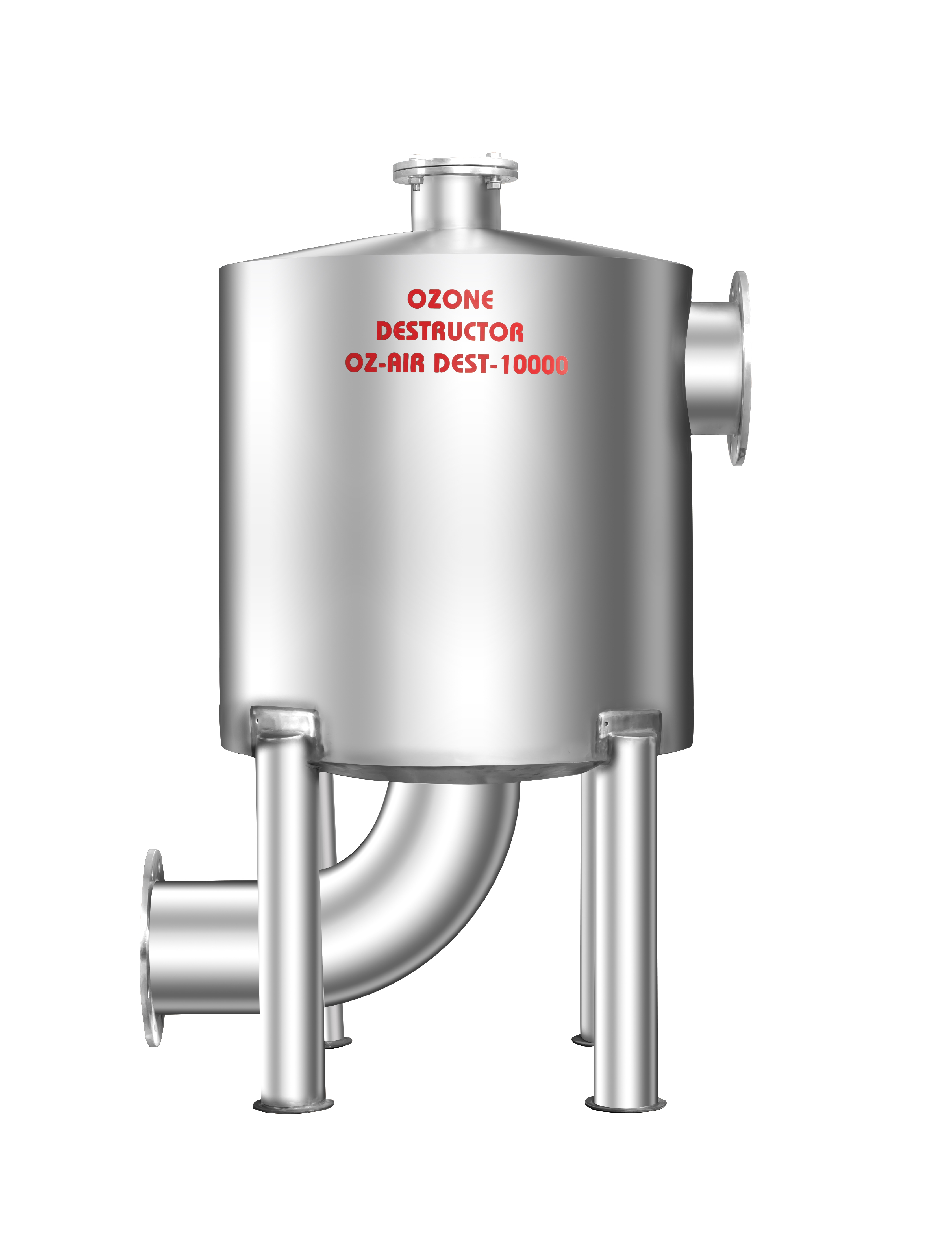

An ozone destructor is a device or system designed to break down ozone molecules (O3) into oxygen (O2) or other harmless substances. Ozone destructors are typically used in applications where ozone is produced as a byproduct or is present in undesired concentrations, such as in industrial processes, air purification systems, or wastewater treatment plants.
The need for ozone destruction arises because ozone can be harmful to human health and the environment in high concentrations. While ozone in the upper atmosphere (stratosphere) is beneficial, as it absorbs harmful ultraviolet radiation from the sun, ground-level ozone can cause respiratory problems, eye irritation, and damage to plants and materials.
1. Thermal Destruction: Ozone can be broken down into oxygen molecules through high temperatures, typically above 1000°C. This method is effective but energy-intensive.
2. Catalytic Destruction: Catalytic ozone destructors use catalysts to facilitate the conversion of ozone into oxygen at lower temperatures, making them more energy-efficient than thermal methods.
3. Chemical Destruction: Chemical agents such as activated carbon, potassium iodide, or manganese dioxide can react with ozone to convert it into oxygen or other harmless compounds.
4. UV Photolysis: Ultraviolet (UV) light can also break down ozone molecules into oxygen molecules through a process called photolysis.
The choice of ozone destruction method depends on factors such as the concentration of ozone, the required efficiency, energy considerations, and the specific application.
An ozone destructor is a device or system designed to break down ozone molecules (O3) into oxygen (O2) or other harmless substances.
Ozone can be harmful to human health and the environment in high concentrations. Ground-level ozone can cause respiratory problems, eye irritation, and damage to plants and materials.
Ozone destructors are used in various applications where ozone is produced as a byproduct or is present in undesired concentrations. This includes industrial processes, air purification systems, and wastewater treatment plants.
Ozone destructors employ different methods to break down ozone molecules, including thermal destruction (high temperatures), catalytic destruction (using catalysts), chemical destruction (using chemical agents), and UV photolysis (using ultraviolet light).
Ozone destructors help mitigate the harmful effects of ozone by converting it into oxygen or other harmless substances, thereby reducing health risks and environmental damage.
Some ozone destruction methods, such as catalytic destruction and UV photolysis, are more energy-efficient than others, such as thermal destruction. The choice of method depends on factors such as efficiency requirements and energy considerations.
Ozone destructors themselves are generally safe to use when operated correctly. However, proper safety precautions should be followed, especially when dealing with high temperatures, chemical agents, or UV light.
Factors to consider include the concentration of ozone, required efficiency, energy considerations, specific application requirements, and regulatory compliance.
Yes, like any other mechanical or chemical system, ozone destructors may require maintenance to ensure optimal performance and longevity. This may include regular cleaning, replacement of consumable parts, and periodic inspections.
Depending on the application and location, there may be regulations or guidelines governing the use of ozone destructors to ensure environmental protection and public safety. It's important to comply with relevant regulations and standards.